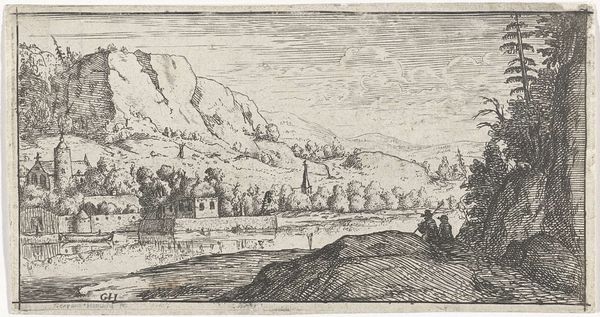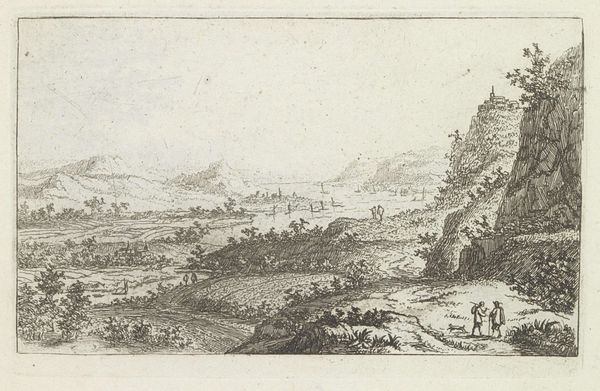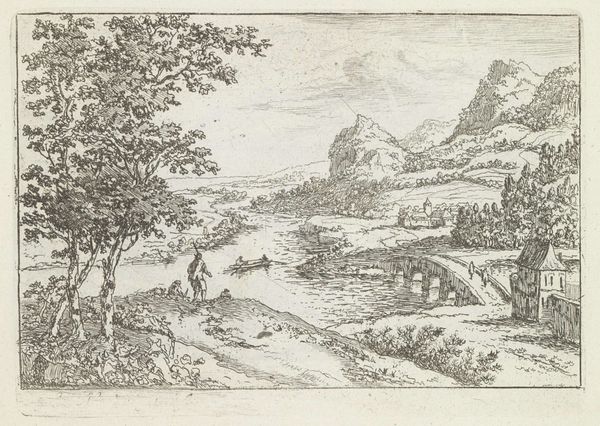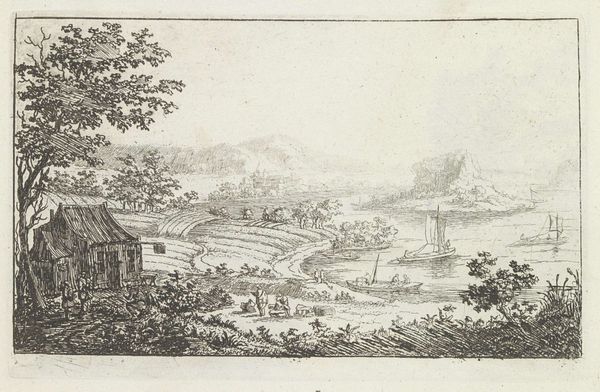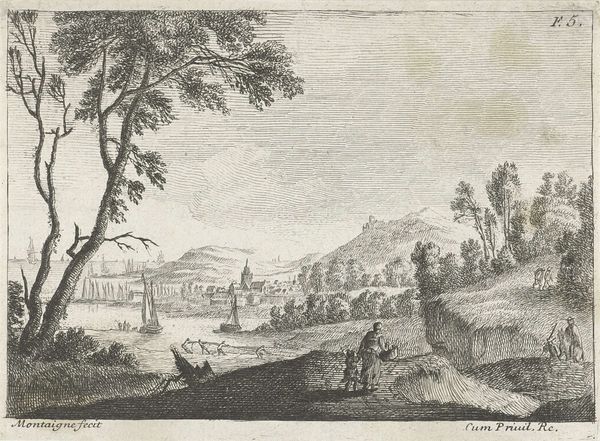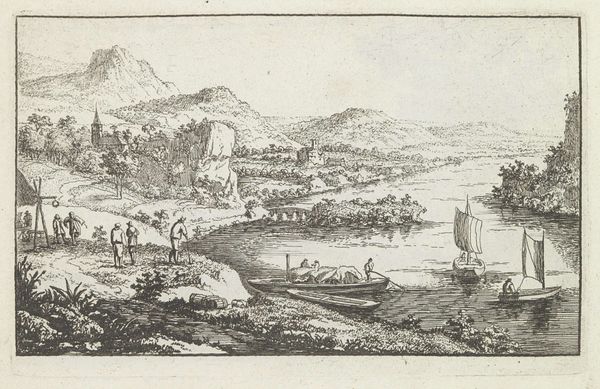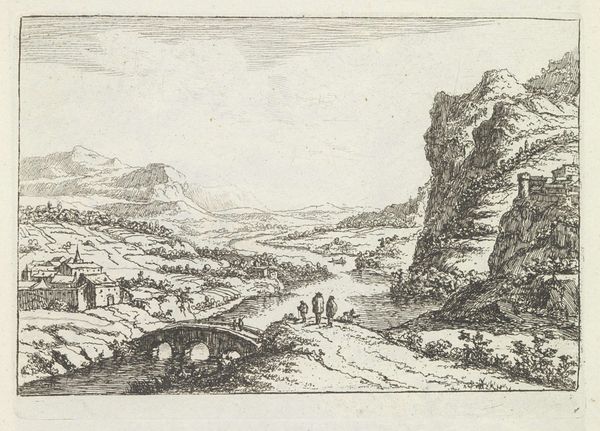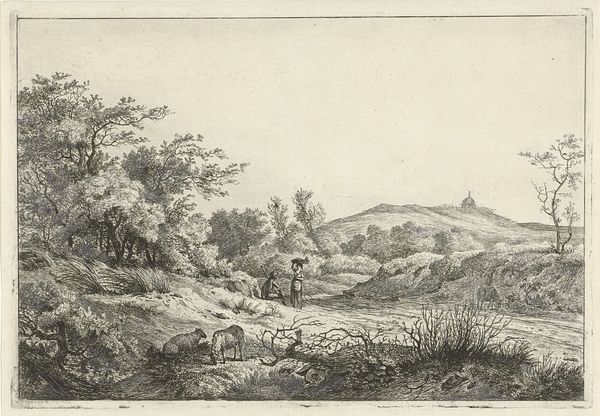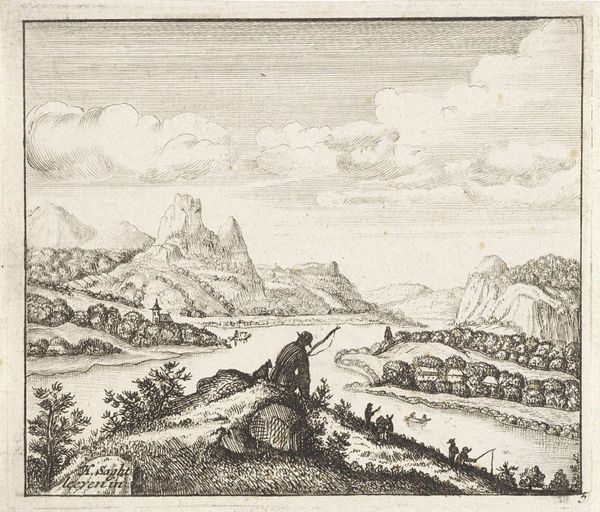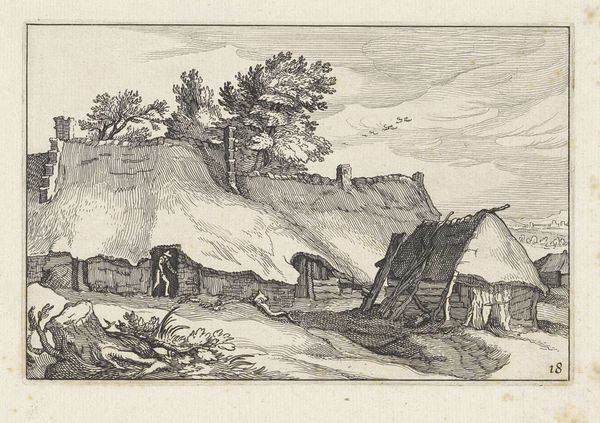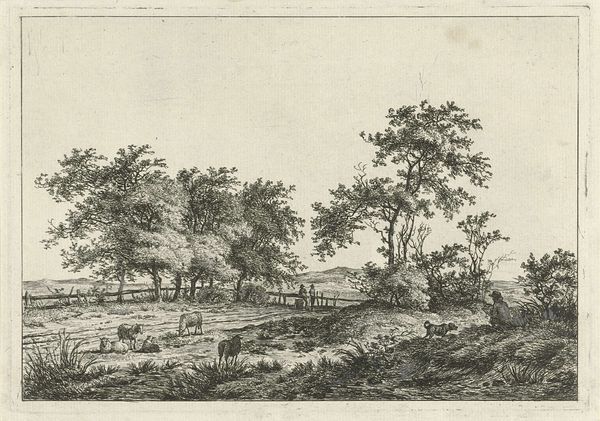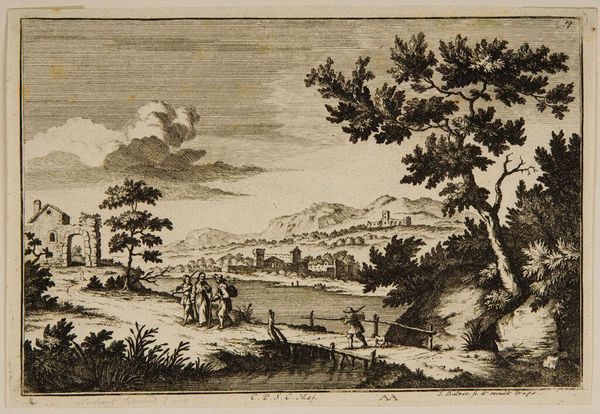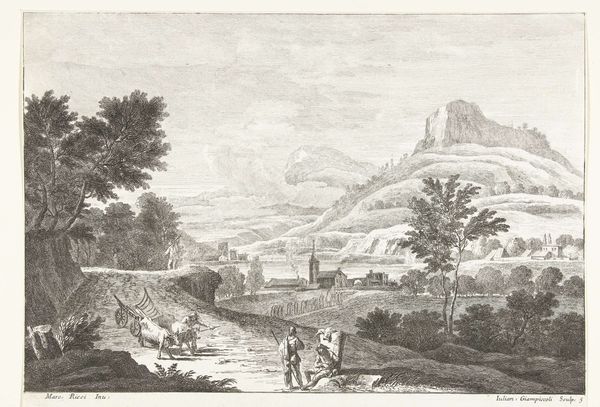
drawing, print, etching
#
drawing
#
dutch-golden-age
# print
#
etching
#
landscape
Dimensions: height 97 mm, width 153 mm
Copyright: Rijks Museum: Open Domain
Editor: So, this is "House on the banks of a river," an etching by Jan van Almeloveen, dating from possibly 1662 to 1833, currently at the Rijksmuseum. It's such a detailed little scene, almost like a stage set. What stands out to you in this work? Curator: The enduring power of archetypes, primarily. We have the basic elements: the home, representing safety and belonging; the winding path, suggesting journeys and choices. What feelings does that evoke for you, viewing these symbols of 'home' and 'travel' juxtaposed here? Editor: It makes me think of finding peace after a long journey. The people seem to be congregating, resting. Curator: Exactly! That simple act of gathering becomes imbued with meaning. Think about the symbolic weight of water throughout art history—purity, transformation, the subconscious. And here it flows, connecting the cottage to a broader world. What stories might those travelers tell, having crossed the water? What are they hoping to find? Editor: They might be seeking refuge, perhaps, or even adventure, depending on how you interpret the symbols. It's interesting how simple elements create so much possibility. Curator: Precisely. Consider how the Dutch Masters, while renowned for realism, were masters of embedding symbolic meanings within everyday scenes, invoking universal longings and anxieties. Does knowing that change your understanding? Editor: Absolutely. I saw just a pretty landscape before, but now I see layers of narrative. Thanks! Curator: It’s about unlocking those layers to understand not only the artist’s vision but our own connection to these timeless themes. Food for thought!
Comments
No comments
Be the first to comment and join the conversation on the ultimate creative platform.
